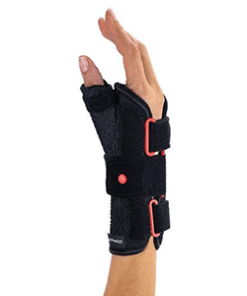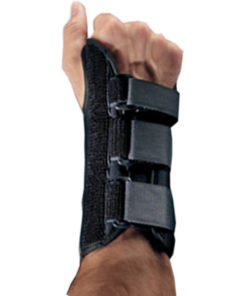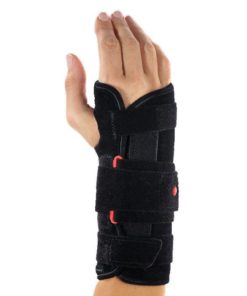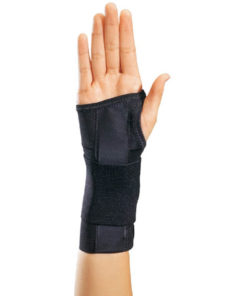Common Wrist Injuries
Injuries to the wrist are a common issue that can be caused by a variety of reasons, ranging from repetitive stress to sudden impact or injury, or age-related degeneration. These injuries can range in severity from mild discomfort to serious injuries that can cause long-term disabilities. Two of the most common wrist injuries are carpal tunnel syndrome and wrist tendonitis.
Aircast
Carpal tunnel syndrome is a condition that affects the wrist, hand, and fingers. This condition occurs when the median nerve, which runs through the wrist, is compressed or pinched. The median nerve is responsible for providing sensation to the thumb, index, and middle fingers. Symptoms of carpal tunnel syndrome gradually develop over time and can worsen with time. The most common symptoms of carpal tunnel syndrome include tingling, numbness, pain, and weakness in the affected hand or fingers, worsening at night or during activities that involve repetitive wrist motion such as typing.
DonJoy
Wrist tendonitis is another common injury in the wrist. It occurs when the tendons that connect the muscles in the forearm to the bones in the wrist become inflamed or irritated. This condition can be caused by repetitive use of the wrist, sudden impact or injury, or age-related degeneration. Wrist tendonitis can cause pain, stiffness, and swelling in the affected wrist. The pain associated with wrist tendonitis can range from mild to severe and may be accompanied by tenderness and warmth in the affected area.
There are various treatments and prevention strategies that can help manage and reduce the symptoms of both carpal tunnel syndrome and wrist tendonitis. Rest, ice, and elevation of the affected area can help to reduce pain and swelling. Wearing a wrist brace or splint during activities that involve repetitive motion such as typing or playing an instrument can also help prevent symptoms from occurring or worsening.
In some cases, physical therapy exercises can be beneficial for managing symptoms. These exercises may include stretches and strengthening exercises for the wrist and forearm muscles. Additionally, making ergonomic changes to workstations and equipment such as using a keyboard with a wrist rest or adjusting the height of a desk can help to reduce the risk of wrist injuries.















